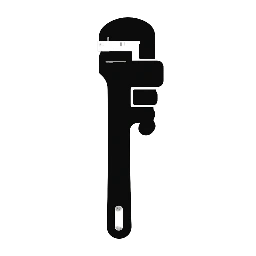Water damage is a homeowner’s worst nightmare. A small, unnoticed leak can silently wreak havoc behind walls, under floors, or in your basement, leading to thousands of dollars in repairs, mold growth, and a massive headache. But what if your home could tell you about a problem the moment it started?
This is the promise of smart home plumbing. By integrating connected fixtures and powerful sensors into your home’s water system, you can move from a reactive approach to a proactive one. This isn’t just about preventing a disaster—it’s about saving money on your water bill, enhancing daily convenience, and gaining a level of control and peace of mind you never thought possible.
Let’s dive into the world of smart plumbing and explore how to get started.
What Exactly Are Smart Plumbing Fixtures and Sensors?
Think of smart plumbing as the next evolution of your home’s water system. It’s a suite of connected devices that use sensors, automation, and Wi-Fi to provide real-time monitoring and control. These devices fall into two main categories:
1. Smart Plumbing Fixtures: These are the items you interact with daily. They enhance your convenience and help you conserve water.
- Smart Faucets: Touchless operation for hygiene, precise temperature control, and timed dispensing for tasks like filling a pot. Some models even have voice activation.
- Smart Showers: Create a personalized spa experience with pre-set water temperatures, flow rates, and even integrated music and lighting. Many feature a digital display and can be controlled remotely.
- Smart Toilets: A modern luxury that includes features like heated seats, automatic flushing, and self-cleaning functions.
2. Smart Plumbing Sensors and Monitors: These devices are the silent guardians of your home, always on the lookout for trouble.
- Leak Detectors: Small, discreet sensors you place near appliances (water heaters, dishwashers, washing machines) and under sinks. They detect moisture and send an immediate alert to your smartphone.
- Whole-Home Water Monitors: These devices attach directly to your main water line. They use advanced technology to analyze water flow and pressure, identifying micro-leaks, unusual consumption patterns, and the potential for a catastrophic burst pipe. Many can even automatically shut off your water supply in an emergency.
- Smart Water Shut-Off Valves: Often paired with whole-home monitors, this is the ultimate failsafe. When a leak is detected, the smart valve can automatically close the main water line, preventing extensive water damage.
The Benefits Go Beyond Leak Protection
While avoiding a plumbing disaster is the main driver for many, the advantages of installing smart plumbing technology extend far beyond prevention.
- Water and Energy Conservation: Smart devices like faucets and showers help you manage and reduce your consumption. Whole-home monitors give you a detailed breakdown of your water usage, empowering you to identify waste and make smarter choices. This translates directly to lower utility bills.
- Enhanced Convenience and Customization: Imagine a shower that’s the perfect temperature the moment you step in, or a kitchen faucet that dispenses exactly one cup of water with a simple voice command. Smart fixtures make your daily routine more seamless and enjoyable.
- Peace of Mind: With real-time alerts sent to your phone, you can leave your home for vacation or work without the constant worry of a hidden leak. You’ll know instantly if a problem arises and can often take action remotely.
- Increased Property Value: Smart home technology is a major selling point. A home equipped with modern, water-saving, and damage-preventing plumbing systems is more attractive to potential buyers.
DIY vs. Professional Installation: What’s Right for You?
The installation process for smart plumbing varies greatly depending on the device.
DIY-Friendly Options:
- Spot Leak Detectors: These are typically wireless and battery-powered. You simply place them on the floor near a potential leak source. The setup involves connecting them to your home Wi-Fi network and a mobile app.
- Smart Faucet Adapters: Some products allow you to convert your existing faucet into a touchless one with a simple add-on. This is a great, low-cost way to get started.
- Smart Shower Heads: For a simple upgrade, many smart shower heads can be screwed on in place of your old one, offering Bluetooth speakers or LED temperature indicators.
When to Call a Pro:
- Whole-Home Water Monitors and Shut-Off Valves: These devices are installed directly onto your main water line. This requires plumbing expertise, as an incorrect installation could lead to leaks or a complete disruption of your home’s water supply. A certified plumber will ensure the job is done safely and correctly.
- Complex Smart Fixtures: Installing a full smart shower system with multiple spray heads, a digital control panel, and integrated wiring is a job best left to a professional. The same goes for smart toilets, which may require electrical and specialized plumbing hookups.
- Integrating with Existing Plumbing: If your home has an older plumbing system, a professional can assess its condition and ensure the new smart devices are compatible and installed without causing future issues.
The Bottom Line: An Investment in Your Home’s Future
Installing smart home plumbing fixtures and sensors is more than a trendy upgrade; it’s a strategic investment in the safety, efficiency, and value of your home. By choosing the right mix of devices—from simple, DIY leak detectors to a full-scale, professionally installed whole-home monitoring system—you can tailor your smart plumbing to fit your budget and your needs.
Don’t wait for a burst pipe to show you the value of smart plumbing. Take the first step today toward a smarter, safer, and more efficient home.


Leave a Reply